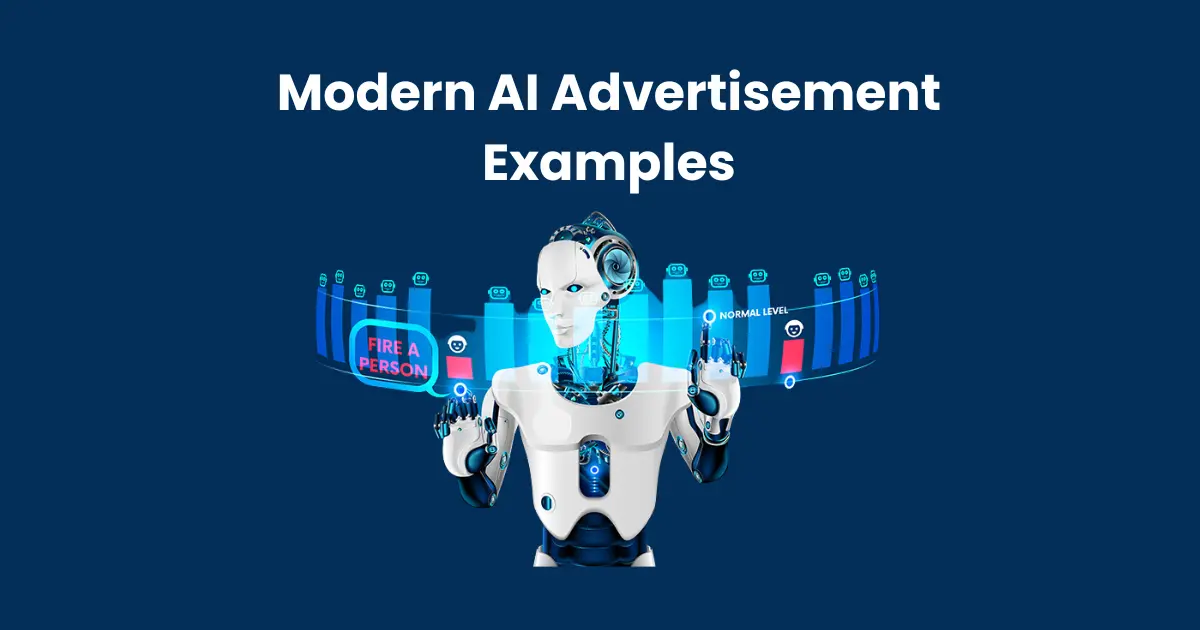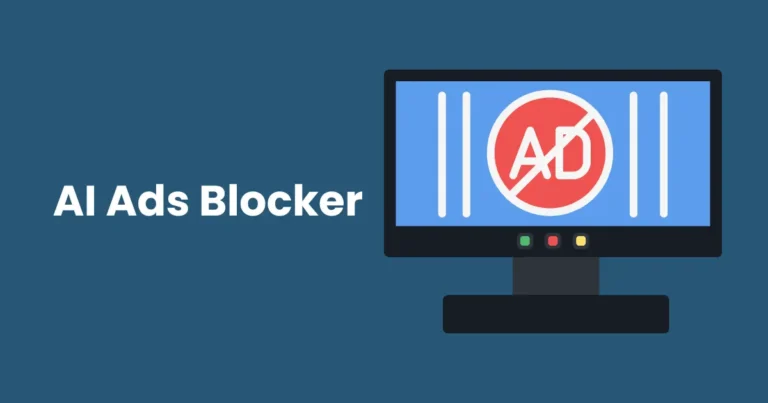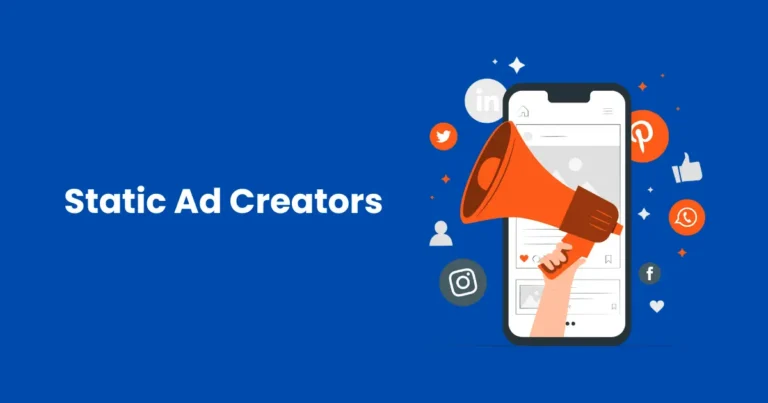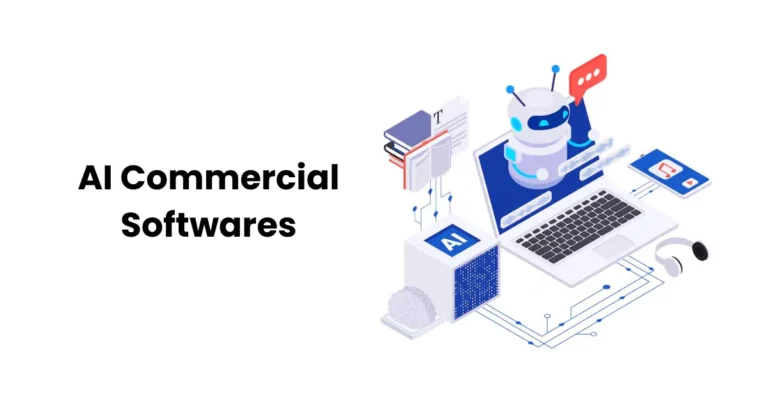Modern AI Advertisement Examples In 2025

Contents
- 1 What is AI Advertising?
- 2 Modern AI Advertisement Examples
- 3 Benefits of AI in Modern Advertising
- 4 Challenges in AI Advertising
- 5 The Future of AI Advertisements
- 5.1 Hyper-Personalization
- 5.2 AI-Driven Creative Design
- 5.3 Voice and Conversational AI Ads
- 5.4 Predictive AI and Real-Time Adjustments
- 5.5 Integration of AI with Augmented and Virtual Reality (AR/VR)
- 5.6 Ethical AI and Transparency in Advertising
- 5.7 AI-Powered Programmatic Advertising Evolution
- 5.8 AI for Emotional and Sentiment Analysis
- 5.9 Conclusion
In recent years, modern AI advertisement examples have rapidly transformed the landscape of digital marketing, shaping the way brands connect with their audiences. Artificial Intelligence (AI) has become a powerful tool for creating highly personalized, efficient, and targeted advertising campaigns. By leveraging vast amounts of data and predictive analytics, AI allows advertisers to tailor their messages in real-time, ensuring they reach the right consumer with the right content at the right moment. As businesses continue to adopt AI-driven marketing strategies, its impact on the advertising industry is undeniable, setting the stage for the future of consumer engagement. This article explores the rise of AI in advertising, showcasing key examples of how modern AI technologies are reshaping the way we experience ads.
What is AI Advertising?
AI advertising refers to the use of Artificial Intelligence (AI) technologies to automate, optimize, and enhance various aspects of advertising campaigns. By analyzing large sets of data, AI can make real-time decisions about targeting, bidding, content creation, and even customer interactions. Essentially, AI advertising helps brands reach the right audience with personalized and relevant ads while improving efficiency and effectiveness.
The core of AI advertising lies in its ability to predict consumer behavior, analyze purchasing patterns, and tailor content to individual preferences. Through machine learning algorithms, AI can continuously learn from past data to refine advertising strategies, making them more accurate over time. This not only allows advertisers to deliver highly targeted ads but also helps them improve return on investment (ROI) by minimizing wasted ad spend.
AI advertising can be applied across various forms of digital marketing, including display ads, social media promotions, video content, and even search engine ads. It enables businesses to automate repetitive tasks, optimize ad placement, and scale campaigns more effectively than traditional methods, revolutionizing the advertising industry in the process.
Modern AI Advertisement Examples
AI is increasingly becoming an integral part of the advertising industry, enabling brands to deliver highly personalized, efficient, and effective campaigns. Below are some modern AI advertisement examples that illustrate how AI is transforming advertising strategies across various sectors:
Personalized Recommendations by Streaming Platforms
One of the most recognizable modern AI advertisement examples is the personalized recommendation systems used by streaming platforms like Netflix and Spotify. These platforms use AI algorithms to analyze user behavior and preferences, allowing them to suggest movies, TV shows, or music that users are likely to enjoy. By tracking viewing or listening habits, AI continuously improves the accuracy of its recommendations, creating an advertisement-like experience. This personalization keeps users engaged while subtly influencing their content consumption, driving retention and user satisfaction.
AI-Driven Content Creation
Another innovative AI advertisement example is the use of AI-driven content creation tools. Platforms like Jasper and Copy.ai allow brands to generate ad copy, social media posts, blogs, and other marketing materials automatically. These tools leverage machine learning and natural language processing (NLP) to craft messages that align with the brand’s tone, target audience, and marketing goals. By automating the content creation process, businesses can produce large volumes of personalized ads at scale while saving time and resources.
Chatbots in Customer Engagement
Chatbots powered by AI have become a standard tool in modern AI advertising. Brands like Sephora and H&M use AI chatbots to engage with customers in real time on their websites or mobile apps. These bots not only provide instant customer service but also recommend products based on user preferences, past purchases, or browsing history. By analyzing customer interactions, the AI-powered chatbots can fine-tune their responses and recommendations, offering a personalized shopping experience that feels like an advertisement tailored to the individual.
Programmatic Advertising
Programmatic advertising is a highly effective form of AI-driven advertising that automates the buying and selling of digital ad space. Using AI algorithms, programmatic advertising platforms like Google Ads and The Trade Desk make real-time decisions about which ads to display, when to display them, and how much to bid for ad space. These platforms analyze factors like user demographics, browsing history, and online behavior to ensure that ads are shown to the most relevant audience. The use of AI in programmatic advertising has dramatically improved ad targeting, ensuring that ads are more personalized and cost-effective.
Predictive Analytics in Ad Campaigns
AI-powered predictive analytics tools are increasingly being used in advertising to forecast consumer behavior and trends. Companies like Salesforce and HubSpot use AI to analyze past customer interactions and predict which leads are most likely to convert into sales. By incorporating predictive analytics, advertisers can optimize their ad campaigns in real time, making adjustments based on the anticipated actions of their target audience. This ensures that campaigns are always aligned with the audience’s current needs and interests, maximizing the chances of success.
These modern AI advertisement examples showcase how AI is reshaping the advertising landscape. From personalized recommendations and content creation to customer engagement and predictive analytics, AI is helping brands deliver more targeted and effective advertising campaigns, making the overall marketing process smarter, faster, and more impactful.
Benefits of AI in Modern Advertising
AI has revolutionized the advertising industry, offering numerous benefits that improve both the efficiency and effectiveness of campaigns. By utilizing advanced algorithms and data analysis, AI enables advertisers to create more personalized, targeted, and optimized advertising experiences. Below are some key benefits of AI in modern advertising:

Enhanced Personalization
One of the biggest advantages of AI in modern advertising is its ability to personalize ads at scale. AI analyzes vast amounts of consumer data, including past behavior, interests, and preferences, to deliver highly relevant advertisements. This personalized approach ensures that consumers see ads that are tailored to their specific needs, making them more likely to engage with the content. Personalized ads not only increase conversion rates but also improve the overall user experience, as consumers feel more connected to the brand.
Improved Targeting
AI improves targeting by using data analytics to identify the most relevant audiences for a particular ad. By analyzing user demographics, behavior, and past interactions, AI can determine which consumers are most likely to respond to an ad. This leads to more precise ad placement, ensuring that ads are shown to individuals who are genuinely interested in the product or service being advertised. As a result, advertisers can optimize their ad spend by focusing on high-potential leads, reducing wasted impressions.
Cost Efficiency
AI helps advertisers optimize their spending by automating many aspects of the ad campaign process. From programmatic ad buying to real-time bidding, AI can adjust campaigns based on performance data, ensuring that advertisers get the best possible return on investment (ROI). By automating tasks such as ad placement, bid management, and content creation, AI reduces the need for manual intervention and minimizes the chances of errors, resulting in cost savings. Additionally, AI’s ability to optimize campaigns in real time helps ensure that budgets are spent efficiently and effectively.
Real-Time Optimization
AI allows for real-time optimization of ad campaigns. Through continuous data analysis, AI can monitor ad performance, detect trends, and make adjustments on the fly to improve results. For instance, AI can adjust ad targeting based on how well certain ads are performing with different segments of the audience. This ability to make instant changes ensures that campaigns remain relevant and effective throughout their duration, maximizing the impact of every ad.
Increased Engagement
AI-driven advertising improves engagement by delivering more relevant and timely ads. Consumers are more likely to engage with ads that reflect their interests and needs. For example, AI algorithms can track consumer behavior and display ads at optimal times, ensuring they reach the audience when they are most receptive. As a result, AI-powered ads lead to higher click-through rates, better user interaction, and stronger brand-consumer relationships.
Better Data Insights
AI provides advertisers with valuable insights into consumer behavior and ad performance. By analyzing vast amounts of data, AI can uncover patterns and trends that might not be immediately obvious to human marketers. These insights help advertisers better understand their audience, predict future behavior, and make informed decisions about future campaigns. With AI’s ability to analyze data at scale, brands can gain a deeper understanding of what works and what doesn’t, allowing them to fine-tune their strategies for maximum effectiveness.
Automation and Efficiency
AI streamlines and automates many manual tasks involved in advertising, such as data analysis, ad creation, and campaign management. Automation frees up valuable time for marketers to focus on more strategic tasks, like creative development and high-level planning. With AI handling routine tasks, businesses can run multiple campaigns simultaneously without sacrificing quality, enabling them to scale their advertising efforts more efficiently.
Challenges in AI Advertising
While AI has brought significant advancements to the advertising industry, its integration into marketing strategies is not without challenges. As brands increasingly rely on AI to optimize their campaigns, they must also address various obstacles to ensure its effectiveness and ethical application. Below are some of the key challenges in AI advertising:

Data Privacy and Security Concerns
AI advertising relies heavily on data, especially personal and behavioral information, to create targeted campaigns. This raises concerns about data privacy and security, as consumers become more aware of how their data is being collected, stored, and used. Stringent regulations like the General Data Protection Regulation (GDPR) in Europe and the California Consumer Privacy Act (CCPA) have placed strict limitations on data collection practices, making it more challenging for advertisers to gather and utilize consumer data. Ensuring compliance with these regulations while still running effective AI-driven campaigns requires careful planning and robust security measures.
Bias in AI Algorithms
AI algorithms are only as good as the data they are trained on, and if the data contains biases, the resulting ads can perpetuate or even amplify these biases. For instance, an AI algorithm trained on biased demographic data might unintentionally target specific groups of people while excluding others. This can lead to unfair or discriminatory ad practices, which can damage a brand’s reputation and result in legal consequences. To mitigate this, brands must ensure that their AI systems are trained on diverse and representative datasets, as well as continuously monitor and audit algorithms for bias.
High Initial Investment
Implementing AI in advertising often requires a significant upfront investment in technology, tools, and talent. Businesses need to invest in AI software, platforms, and data infrastructure, as well as hiring skilled professionals like data scientists and machine learning engineers to develop and manage AI-driven campaigns. While AI can lead to cost savings in the long run, the initial financial commitment can be a barrier for smaller businesses or startups looking to integrate AI into their marketing efforts.
Complexity in Implementation
Despite the numerous advantages, integrating AI into existing advertising processes can be complex. Brands often face challenges when attempting to combine AI with their legacy systems or existing marketing strategies. The learning curve for new technologies can be steep, and businesses may struggle to understand how best to use AI for specific advertising goals. In some cases, organizations may need to overhaul their entire marketing approach to fully leverage AI’s capabilities, which can be time-consuming and resource-intensive.
Dependence on Data Quality
AI advertising’s success is directly tied to the quality of the data it processes. Inaccurate, incomplete, or outdated data can undermine the performance of AI algorithms, leading to poorly targeted ads and wasted ad spend. Data collection and management processes must be carefully designed to ensure that only high-quality, relevant data is fed into AI systems. Additionally, continuous data cleansing and updating are essential to maintain the effectiveness of AI-driven campaigns over time.
Over-Reliance on Automation
While automation in AI advertising can significantly improve efficiency, there is a risk of becoming too reliant on it. AI can handle many tasks autonomously, but human oversight remains crucial to ensure that the campaigns align with broader business objectives and brand values. Relying too heavily on AI to make decisions without human intervention may result in campaigns that lack creativity or fail to connect emotionally with the audience. Marketers must strike a balance between automation and human input to achieve the best results.
Transparency and Accountability
AI algorithms, particularly those based on machine learning, can often be seen as “black boxes” because their decision-making processes are not always transparent. This lack of transparency can create challenges in understanding why certain ads are shown to particular users or how the algorithm arrived at its decisions. Without clarity on how AI systems are functioning, it can be difficult for brands to ensure accountability and justify ad placements, especially if they face consumer backlash or legal scrutiny. Increasing transparency in AI advertising models is necessary to build consumer trust and ensure ethical practices.
AI advertising offers numerous benefits, businesses must navigate a range of challenges to effectively harness its potential. From data privacy concerns and algorithmic biases to high costs and implementation complexities, overcoming these obstacles requires careful planning, continuous monitoring, and a commitment to ethical advertising practices. By addressing these challenges, brands can unlock the full potential of AI in their advertising strategies and drive more impactful results.
The Future of AI Advertisements
The future of AI in advertising is incredibly promising, with technology continuing to evolve at a rapid pace. As AI capabilities expand, we can expect even more innovative and sophisticated approaches to advertising that will redefine how brands interact with consumers. Below are some key trends and possibilities for the future of AI advertisements:

Hyper-Personalization
As AI technologies advance, the ability to personalize ads will become even more refined. Hyper-personalization will allow brands to create ads tailored not only to broad customer segments but also to individual preferences, behaviors, and contexts. Through deep data analysis, AI will predict a consumer’s next steps and serve highly relevant ads in real time. This shift from basic personalization to hyper-personalized content will ensure that every consumer experiences ads uniquely suited to their tastes, increasing engagement and conversion rates.
AI-Driven Creative Design
AI is already playing a role in content creation, and its influence is expected to grow in the future. AI-driven creative design tools will be able to generate not just ad copy but also visual assets, videos, and even interactive ads. By analyzing trends, audience reactions, and historical data, AI will assist designers in producing more compelling and creative advertising content. This will streamline the design process and allow brands to create dynamic, eye-catching ads without needing extensive human intervention. In turn, marketers will have more time to focus on strategy and ideation.
Voice and Conversational AI Ads
With the rise of smart speakers and voice assistants like Amazon Alexa, Google Assistant, and Apple Siri, voice-based AI advertising will become more prominent. Conversational AI ads will allow consumers to interact with ads via voice, providing a more engaging and personalized experience. Brands will use AI to create voice-activated campaigns that respond to consumer queries, offer tailored product recommendations, and even facilitate purchases directly through voice commands. This shift will introduce new opportunities for brands to connect with audiences in more interactive and immersive ways.
Predictive AI and Real-Time Adjustments
AI’s ability to predict consumer behavior will continue to evolve, with more accurate and timely predictions of purchasing intent. Predictive AI will enable brands to anticipate what consumers need or want before they even know it themselves. Through constant data collection and analysis, AI will optimize ad placements and content based on real-time consumer behavior. Advertisers will be able to make adjustments to their campaigns on the fly, ensuring that ads are continuously aligned with the audience’s shifting preferences. This real-time responsiveness will drive higher engagement and conversions.
Integration of AI with Augmented and Virtual Reality (AR/VR)
The integration of AI with augmented reality (AR) and virtual reality (VR) will open up entirely new possibilities for interactive advertising experiences. Imagine trying out products virtually in your own home through AR, with AI-powered ads that guide you through the experience based on your preferences. Similarly, VR will allow brands to create immersive ad experiences where consumers can engage with products in a virtual environment, all driven by AI’s ability to personalize content in real-time. This combination will make advertisements more experiential, memorable, and interactive.
Ethical AI and Transparency in Advertising
As AI becomes more integral to advertising, ethical considerations will play a larger role in shaping the industry. Consumers are increasingly concerned about how their data is being used, and future AI advertising practices will likely prioritize transparency and consent. Brands will need to adopt more ethical AI practices, ensuring that data privacy is respected and that algorithms are free from bias. Striving for transparency in AI-driven advertising models will foster greater consumer trust and build long-lasting relationships. Future AI tools will be designed to explain their decision-making processes, making it easier for advertisers to remain accountable for their ad placements.
AI-Powered Programmatic Advertising Evolution
Programmatic advertising, which automates the buying and selling of digital ad space, will continue to evolve with the help of AI. As AI-powered programmatic advertising becomes more advanced, ads will be served in even more precise contexts, with real-time optimization based on ongoing user interactions. AI will enhance programmatic buying by continuously learning from each campaign, predicting the most effective moments to show ads, and dynamically adjusting bids for ad placements. This will further reduce costs and improve ad performance by targeting the right audience at the right time.
AI for Emotional and Sentiment Analysis
In the future, AI will gain the ability to analyze not just consumer behaviors but also emotions and sentiment. By analyzing facial expressions, voice tone, and even social media conversations, AI will gauge how people feel about a product, brand, or ad. This emotional intelligence will help advertisers craft campaigns that resonate more deeply with consumers, ensuring that ads connect on an emotional level. Brands will be able to optimize their messaging based on the sentiment surrounding their target audience, creating ads that drive stronger emotional responses and greater loyalty.
The future of AI advertisements holds immense potential to reshape the marketing landscape. With advancements in hyper-personalization, AI-driven creative tools, voice-activated ads, and real-time adjustments, advertising will become more intuitive, interactive, and tailored to individual needs. By embracing these innovations, brands will be able to create more engaging and effective ad campaigns that deliver a personalized, seamless, and immersive experience for consumers. However, as the technology continues to evolve, it will be essential for advertisers to remain mindful of ethical concerns and strive for transparency and fairness in their AI-driven advertising strategies.
Conclusion
The world of advertising is undergoing a profound transformation, thanks to the continuous advancements in AI advertising. From hyper-personalized content and AI-driven creative designs to the integration of voice and conversational ads, the future holds exciting possibilities for how brands engage with consumers. As AI evolves, it will enhance the ability to predict consumer behaviors, optimize ad placements in real time, and create immersive experiences through augmented and virtual reality.
However, with these innovations come challenges, such as data privacy concerns, the risk of algorithmic bias, and the need for ethical practices in AI usage. To succeed in this new landscape, brands must embrace AI while also ensuring transparency, accountability, and the ethical handling of consumer data.
In conclusion, AI advertising offers unparalleled opportunities for brands to refine their marketing strategies, improve customer engagement, and drive more effective campaigns. By staying at the forefront of AI technology and addressing the associated challenges, businesses can leverage this powerful tool to create more meaningful connections with their audiences and thrive in an increasingly digital world.






